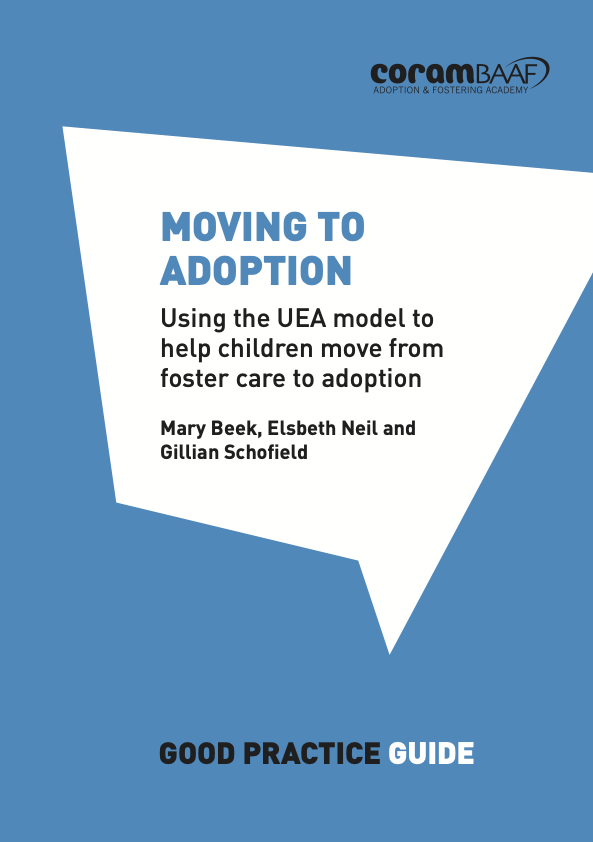
Moving to Adoption
Using the UEA model to help children move from foster care to adoption
£18.95
For the majority of UK children adopted from care, adoption confers legal security, loving relationships and a sense of belonging in the adoptive family. However, in most cases, it also means that the child must be moved from a trusted foster family. This can involve positive anticipation and enjoyment of new experiences, but also difficult feelings, which may include grief and loss of the foster and birth families. When this emotional impact is not recognised and responded to sensitively, or when moves are stressful or rushed, this can negatively affect the child’s well-being and even the adoption’s stability. It is essential that social work practice before, during and after the move places the child’s emotional needs at the centre, whilst also supporting carers and adopters.
This practice guide introduces an authoritative practice model for supporting children’s moves from their foster family to their adoptive family – the University of East Anglia (UEA) Moving to Adoption model. Drawn from a two-year practice development project, the UEA model promotes sensitive practice that is responsive to the child’s needs. It can be applied to the moves of children of all ages and a range of circumstances. Although the focus is on adoption, the model’s child-centred principles are applicable whenever a child is to be moved from one carer to another.
This guide helps managers, social workers and other professionals to embed the model in their practice, and use it to support children, foster carers and adopters through this pivotal time in their lives.
The book also includes a Secure Base checklist which can be downloaded in Word format.
Read the contents page and introduction
AVAILABLE IN EBOOK AND HARD COPY
Questions about eBooks? Check out our FAQs
A 10% bulk discount will be applied at the checkout for orders of 10 copies or more on this title.
